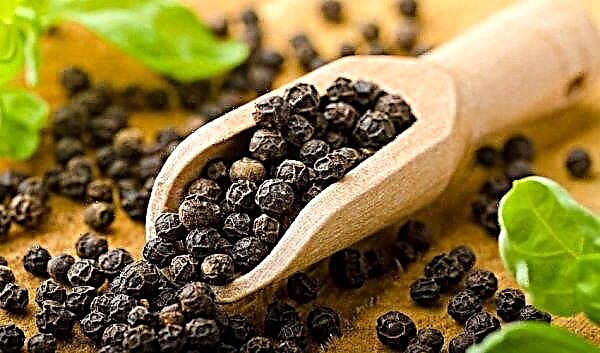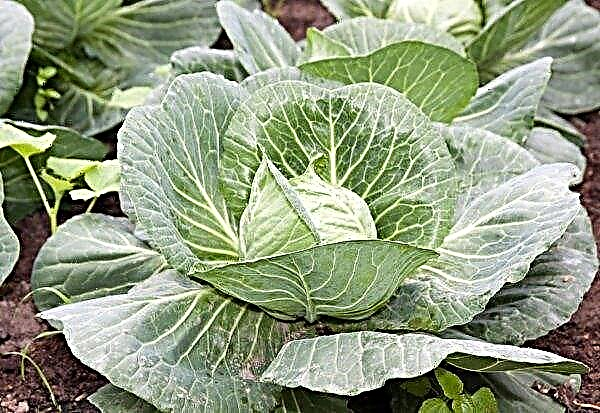Natural honey is considered a unique product that can be stored at home for years without losing its beneficial properties. But sometimes it happens that a recently bought treat changes its structure, acquires an unpleasant taste and smells of braga. Why honey has fermented in the bank, what does it mean, and is it possible to use such a product? Read more about this later.
Can honey ferment
This question may be perplexing for someone, because it is believed that honey almost never spoils. Indeed, this happens extremely rarely with a high-quality natural product, because honey is itself an antiseptic, and the growth of any microorganisms in it is impossible. It sour mainly due to the fault of irresponsible beekeepers and the buyers themselves, and this phenomenon is more a deviation than a norm.
The environmental factors affecting the quality of honey should not be ruled out: toxic substances present in the air and nectar of plants, rainfall, sunny days, etc. In addition, fungi that are present in every “living” product can provoke fermentation and are activated under certain conditions. The fact that honey began to deteriorate can be determined by a change in consistency - it becomes more liquid, and by an unpleasant odor. Then the liquid begins to bubble, and a white foamy coating appears on the surface.
Causes of fermentation and how to avoid it
There are not many reasons why fermentation begins and, knowing about them, damage can be avoided.
Early harvest and high humidity
Some beekeepers rush to collect for the sake of profit or out of ignorance, and they pump out immature honey, which soon begins to ferment. This is due to the high moisture content of the product. At the time when the bees are just starting to process nectar, it contains about 60% of the water. It is easy to assume that such a consistency does not contribute to long-term storage. During the fermentation process, insects extract most of the water from nectar, bringing the mass to the desired thick consistency with a liquid content of not more than 18-20%.
If the humidity in the product exceeds this indicator, which is characteristic of an immature product, souring cannot be avoided. Therefore, it needs to be pumped out not earlier than when the bees seal the frames with propolis at least by a third. If the collection is carried out earlier, the delicacy can become sour due to the high liquid content, which is an excellent medium for the growth of bacteria.Important! The use of "young" honey is in principle possible, but exclusively in a processed form, since there are very few useful properties in it.
Inappropriate storage conditions.
The most common reason that even a fresh and high-quality product can deteriorate is the non-compliance with storage rules and conditions.
There are several factors that shorten the shelf life of natural honey:
- leaky packaging, lack of lid;
- metal packaging (oxidizes and gives the product a specific taste);
- high air temperature (above + 20 ° C) and direct rays of the sun;
- too low temperature (below + 8 ° C);
- increased humidity in the room.

In all these cases, nectar absorbs moisture from the environment, because of which its consistency changes and the fermentation process begins. So that the product does not deteriorate, it must be stored at room temperature, in a dark and dry place. An ideal container for storage is a glass jar, clay or ceramic container with a tight-fitting lid.
Structure
Everyone knows that real honey becomes cloudy and crystallizes over time, which is a sign of its high quality. The beneficial properties of the sweet mass in this case do not decrease, and a change in structure is considered the absolute norm. But if the product undergoes a hardening process forcibly, then after heating its consistency may change.
This happens with honey that has been in the cold for a long time, for example, transported or sold on the market in winter. Of course, at temperatures up to -35 ° C it will not freeze, but it will thicken significantly, and when it is kept in a warm room, it will become more liquid due to the released moisture. For the same reason, the delicacy is not recommended to be stored in the refrigerator or cellar.
The structure of the product also changes after heating, in particular repeated and irregular. Many sellers heat it to sell, so that it becomes fluid and has a beautiful amber color. It is not known how long such a product can be stored, so it is not safer to buy it in a slightly candied form out of season.Did you know? Honey has a strong antiseptic and anti-inflammatory property. It helps in the treatment of diseases of the stomach, heals wounds and surpasses many drugs in this.
Impurities
Sometimes, to increase the volume of the finished product, unscrupulous sellers add water, sugar syrup or less quality nectar from previous collections. This mixture is subjected to repeated heat treatment until it becomes thick and uniform. Of course, such a delicacy cannot stand for a long time, and the reason is still the same - excess water in the sweet mass.
It is impossible to detect impurities in a pure product upon purchase, since signs of spoilage begin to appear 1-2 weeks after boiling. Still, always check the contents of the can. The presence of sediment, incomprehensible clots, white or gray flakes is a sign of poor quality.

Is it possible to eat
The use of fermented honey in its pure form is unacceptable, because all fungi and bacteria, once in the stomach, will certainly cause bloating, heartburn, and even poisoning if harmful substances are present in the sweet mass. And a sour or bitter product with a dubious odor will not deliver pleasure. Heat-treated honey is not harmful to health, but there is no benefit from it. There will not be much harm from consuming immature nectar, but if you are prone to indigestion, it is better to refrain.
Important! In no case should you use fermented honey to feed the bees. Insects can die from a spoiled product.
What can be done with soured honey
If honey has just begun to deteriorate, and has not yet acquired a bitter taste and a pronounced “inedible” smell, you can try to save it. Of course, at the same time, all the healing properties will disappear, but there will remain an amber sugar mass suitable for baking or other purposes.
So, what to do with fermented honey before using it in cooking:
- If foam has formed on the surface, it must be completely removed with a spoon, capturing the top layer of unspoiled mass. This procedure will suspend further fermentation.
- Then put the container in a water bath and warm at + 60 ° C for an hour. Such a long heat treatment will lead to the loss of all healing properties, but otherwise it is impossible to save the product.

The result is a sweet aromatic mass, from which you can cook gingerbread, cakes, various drinks or marinade for meat. To give a characteristic taste, the product can be mixed with old quality honey from the previous collection, and for a pleasant aroma - with lemon. In addition, fermented sweet mass is an ideal raw material for the mead known to all. According to many beekeepers, the drink is exceptional.
Did you know? Honey copes with the removal of alcohol from the body. If you have a hangover in the morning, a spoonful of healthy treats can help.
Of course, little is pleasant that such a valuable product sometimes spoils and sour. However, do not be upset. With a competent approach, he can always find a useful application in the form of an additive to dough, cream or other delicious desserts.














